This document was worked on by @jayseph_ , @untinseled , @Lewk , and the Lore Team as a whole. A very special thank you to everyone who helped with the making of this lore. A very special thank you to @Aania , @usercultist , and @Nylu for the amazing screenshots.
The Beginning - (1612 - 1970)
At the beginning of the Edo Period, the ruling of Yoshiro Kōta gave Karakura’s residents an increase of freedom in their daily lives. However, with this freedom arose a more baleful group - wandering samurai who lurked in the shadows. They were deemed as ‘Rōnin’. Not many knew of these people or their goals as they remained masked by the night and hidden away in the alleyways of the city. The secrecy and uncertainty came to an end, however, with the rise of the Kabukimono. This was an evasive organization which utilized both the tactics and weaponry of the samurai, the very beginnings of Karakuran crime which would last for centuries.
Throughout Japan they became infamous for flashy attire, outlandish haircuts, bizarre behavior, and overall sinister activity. Atypical from the rest of the Japanese population, much of Kabukimono style influence came from Europe and China. Oftentimes traditions were discarded, Haori jackets being lined with lead weights and lapels being made of velvet. Alongside this, obi belts were made with taboo designs for the time period, fours and nines making up the fabric patterns. The flamboyant, eccentric nature of their style was even extended to their weaponry. Kabukimono katanas were easily distinguishable due to their large, delicately patterned tsuba and ornately decorated hilts. Oftentimes their sheaths were longer in comparison to others, and the sword overall was larger. Those especially wishing to leave an impression wielded outlandishly long kiseru pipes in place of blades.
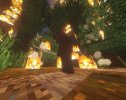
Beginning to show themselves from the shadows, the Kabukimono started with trivial robberies and muggings before making their way up to beatings and eventually brutal killings which would be shown in broad daylight. No longer hiding in the night cast, or in alleyways, the samurai made themselves known to the public, terrorizing citizens across Karakura as years went on. Different associations formed as the eventual first Kabukimono faded away, each attempting to mimic the same physical and fighting style they had.
However, in August of 1772, a prominent organization stood out. Across the Ochiba forest, tongues of flame crept up the tree bark and licked the sky, gray smoke flooding the air with ash and the stench of burning. The cause was never revealed to the general public, however many suspected this the work of this new emerging assembly– the Hōka-han Senshi. During this time, members would be equipped with long swords, weaponry that had been smuggled in through remnants of the Nashima clan; for this would allude to their eventual deep-rooted connection with many arms dealers. In order for Hōka-han Senshi members to honor their inspirations - the Kabukimono - a new practice arose, deemed as tsujigiri. This would consist of gruesome murders occurring in the dead of night upon innocent bypassers, simply to allow for the testing of weapon effectivity. The frequency of these killings increased, leading to a deep-rooted fear to run through the population.
Although, with fear, comes the next two steps: astonishment and replication. Despite the Hōka-han Senshi continuing their brutality through the 1770s, yet another new pack of criminals arose in 1785. They were called the Reikokuna Satsujinsha, and were heavily inspired by the tsujigiri practice. In addition to continuing these crossroad killings, they also began a string of hostage cases and abductions. These events were just for the flashiness of it all, conducted to show the association’s cunning strategy and overflowing power. However, this would soon prove to be their downfall, as lower-ranking members in the hierarchy found themselves being killed off more often as time passed. This led to a civil war within the group’s ranks, previous coworkers now fighting against one another in a class battle. Due to the thinning out of resources and men, the Reikokuna Satsujinsha were gone by the late 1790s. By this time a majority of the older Hōka-han Senshi members were also fading out of the scene – at least, those who were lucky enough to not have died along the way at the hands of their enemy.
By 1800, nearly all big names in crime had died out in Karakura, most buckling under the weight of their own egos. Peace began trickling back into society, the island once again able to prosper without the over-looming presence of violence and death. Paranoia struck juvenile delinquents, who now lived in fear of their eminent deaths under the grips of the more nefarious criminals. This fear of death led to a prominent decrease in nighttime petty crimes, and once more the moon shone over a serene society.
The Financial Era - (1905 - 1914)
After roughly 100 years of peace, the island’s crime-ridden history began to take its presence once again. With the lack of weapons around, criminals needed to find another way to cause corruption and chaos within the streets. The descendants of those who were in Hoka-han Senshi and Reikokuna Satsujinsha found out that their predecessors were once some of the most feared faces in Karakura. Interested in the life that their precursors lived, smaller street gangs began to rise across the town. Different from the irrational and bloody crime that tainted the past, these new groups focused more on petty crimes such as theft, vandalism, and gambling.
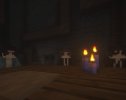
The Takeuchi-kai created and ran Karakura's first underground gambling ring, known as ‘Kanazaki’. Patrons would pay a small fee upfront, get patted down, and then enter through what appeared to be an ordinary nightclub. Yet underneath the bar lay a secret: several black suit-clad Takeuchi-kai members, cards clutched in their fingers. Kanazaki achieved high success, citizens filing in each night to drink and play card games that didn’t quite fall under the law. Many saw unfortunate losses over and over until entire paychecks were gone, many having taken every chance until they could no longer support their addictions. Being the largest income source for any criminal group, it was no wonder how many lives the organization ruined.
What was thought to be an average night was ruined once rivals showed up, dressed in the same garments as the Takeuchi-kai. They proved to be nuisances, refusing to be patted down and instead forcing their way into the bar. Shōrai as a name was gloated around the place, its members being sure the populace understood just who was going to take the earnings. However, they made one crucial mistake: underestimating the Yakuza. Members wielding tantos crept out from everywhere, spilling blood and carnage into the night. Screams filled the air as civilians rushed to leave, hurrying back to their families before they too ended up as a chilling corpse on the dark floor.
Despite the difference in arms and the element of surprise, in the end the Shōrai still reigned victorious. Weapons switched hands, the stench of iron and mortality weighing heavily in the air as blade met skin. Dozens of corpses were sprawled out across the space, evidence of their crimes painted over their skin. The few that survived to tell the tale were arrested on sight, thrown into a high-security prison in Osaka. No one was victorious in the end, the gambling ring finally having seen its last days as peace filled Karakura once more.
The Otori Corruption Years - (1945 - 1976)
In 1945, a new era spread across Karakura. The Otori family rose into power through Tetsuya Otori who was the governor at the time until eventually an Otori was placed as the lead in each and every faction which held authority on the island. Hungry with power, the Otori family threw every piece of morality that they had away in order to keep the reign in Karakura. Over the source of three years, the commissioner, Inaba, and the hospital director, Hisako, joined Tetsuya in their formulated plan to completely control Karkaura. While it seemed to be a peaceful era, crime was done behind the scenes. Money was laundered throughout each and every citizen’s bank account. Insurance and tax fraud made their debut as Inaba and Hisako covered up their earnings and kept every yen coin that made its way into their pockets.
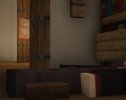
These “behind the scene” crimes peaked in 1950, forcing the citizens of Karakura to bow down to the reign of the Otori family. Inaba, with his men, even set out to keep an eye on each individual living on the island. If one was speaking poorly about the Otori family, illegal weaponry was placed in the homes of the speaker. Forging evidence in order to put anyone who had anything poor to say about the family’s reign behind bars and keep their mouths shut. Without a way for any of the Karakurans to speak up about the mistreatment they’d been facing, a Governor rose up. Chizuru Kato spoke out against the family’s reign, of the mistreatment she’d seen, and that she was planning to do something about it.
The three brothers had to think quickly. Tetsuya invited Chizuru over one night for dinner and a conversation about work. But there was no conversation nor dinner. As soon as Chizuru stepped into the Otori household, she was met with a katana through her gut. The two other brothers quickly moved her out into public, using their positions to control who knew about Chizuru’s death and how much they knew. To the average citizen, it looked like nothing more than another murder of a politician. But behind the scenes, it was a race to cover up, making sure that no one knew what really happened that night.
It wasn’t until years later in 1954 that the public became aware of Otori’s involvement in Kato’s murder. Karakuran citizens took to the streets, causing an uproar and rioting against the family’s reign. Tetsuya was the last Otori to hold any leadership role within Karakura, being fired in 1956 after the investigation into the murder of Chizuru Kato concluded his involvement. His replacement, Junpei Saiky, would then govern Karakura with his colleagues during the next 61 years of peace.
Modern Day - (2017 - 2022)
The town of Karakura’s reign of peace had gone on too long for the criminals of the island. Members of the Nashima Clan were the first to cause chaos, which in turn brought out the criminal side of the everyday civilian. Going back to their Kabukimono’s ways and mixing it in with the more current crime history, the first major gangs of Karakura were created. With the start of the Black Market, weapons were given to those who were once again rash and violent. Their belligerent ways seeped into the social atmosphere of the island, indoctrinating the young minds in Karakura, and creating the most hostile wave of crime yet.
The Emergency Hospital workers and Police Department officers were up to their wit's end as more and more commoners and criminals alike were being knocked out, stabbed, and their limbs taken off their bodies. Criminals were nothing short of something to mess with, even though they seemed to wear dark suits with flashes of bright colors in them. That never stopped any vigilante from using a concealed weapon to stab and kill the average Karakuran.
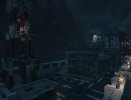
Crime spread like wildfire, even more so than before. Predictably, thugs began to go after the highest prize that they could; killing police officers. One specific gang, Kage, made their appearance wellknown with the brutal murders of said government workers. With the uptick in extreme violence, the push for arresting those with gang affiliation was made. Anyone seen wearing an attire that could be picked out from the common outfit and around a crime scene would be thrown into prison and serve a life sentence. At that point, crime seemed to slightly subside. But only to the KPD. Underground violence rose within the sewer system, making it a criminal hotspot for the simple gangster.
All of which would be showcased on the day that the Karakura Powerplant exploded after pipe failure. Which was nothing more than a front for what really happened inside that day. A gang war between the Akihito Clan and and the Kishi Division. Two sides wielding katanas, naginatas, and wooden baseball bats with nails in them stood staring down the others. A bloodbath between the sides with the cover-up of a small pipe failure. This would then spark a series of events leading to the hostage-taking of a police officer and the breaking out of a gang leader.
After the disbanding of multiple major gangs within Karakura, crime once again slowed down. The streets of the island continued with their crime-ridden citizens. Smaller street gangs continuously popped up here or there, vandalizing properties to spread their names, carving symbols into people, but the murderous rages had seemed to slow down.
Will this trend be the last of Karakura’s crime waves or will it continue on until the end of time? Only you can write the story now.
Being a part of the Japanese Black Market trade, the Karakura Black Market formed as a subset or branch of the main trade. Following the procedures that were given by the ring leader, the Nashima Clan members began to smuggle weaponry into Karakura. Having ties with organizations, Yakuzas, and other people in high places, it was easy for them to get
small shipments of weapons through customs or passed a
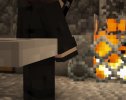 small patrol boat. It started small, with just a few pocket knives, bats, and on occasion a katana or tanto coming in the shipments with just two Black Market Dealers. The two brothers, Asato and Eiichiro Nashima, began the start of the modern Black Market that is seen today on the island.
small patrol boat. It started small, with just a few pocket knives, bats, and on occasion a katana or tanto coming in the shipments with just two Black Market Dealers. The two brothers, Asato and Eiichiro Nashima, began the start of the modern Black Market that is seen today on the island. In 2017, one major gang brought the demand for weaponry from a small point to the highest it had ever been. This forced the KBM to go out on a hunt for potential new Black Market Dealers. Conducting research on the criminals throughout Karakura, never once making themselves known to those they were looking for. Choosing three other top-tear criminals and placing them within the weaponry trade, a hideout was chosen for the section of Japan’s Black Market deep down in the sewer system of Karakura. Hiding in the shadows and deep in the sewer system, the Karakura Black Market began to make an entire system for their dealings. Continuing with their ties in other prefectures of Japan, the larger shipments didn’t cause any more of an issue and went easily undetectable to the Japanese government. They created a hotline, allocating all of the calls they were receiving to one set phone number was their act towards modernization within the trade.
Continuing throughout the years, an entire system was set up. Creating verified and unverified gangs, having them set to the leader of the Karakura Black Market so that there was a way to know who deserved to buy the best and most dangerous weapons. Selling to all those who call, the Karakura Black Market is full of the stealthiest, strongest, and most strategic criminals in Karakura. Hand-picked by each leader themselves, each one is among the elite. Various different leads and regular dealers shifted throughout the years, still all under the direction of the highest leader in the Japanese weaponry trade.
